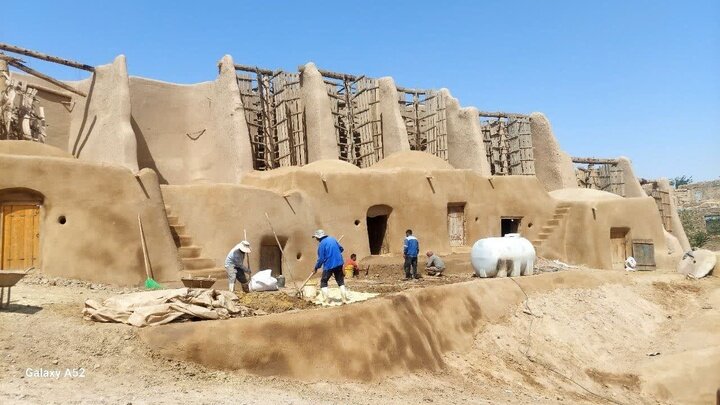Nashtifan’s nine windmills restored

TEHRAN—Head of Khaf Cultural Heritage Department gave news of the end of restoration of nine ancient windmills of Nashtifan in Khorasan Razavi province.
According to Miras Arya (CHTN), Mahmoud Ba’aqideh said that following the visit of Head of Khorasan Razavi Cultural Heritage Department to Nashtifan windmills (locally called Asbads) during June of this year, and upon the request of the Islamic Council of the city, it was decided to restore a number of Asbads of Nashtifan, and 2 billion rials ($2,222) were allocated for this purpose.
He continued that the restoration operations of Asbads started in June and nine Asbads were restored within one month. Lightening, plastering walls, thatching, and restoring the wheel are the most important restoration measures that have been carried out, he added.
Appreciating the cooperation of a number of owners of the windmills and cultural heritage lovers of Nashtifan in restoration of these historical monuments, he said that local community participation plays an important role in the introduction, protection, and maintenance of the historical buildings.
Nashtifan Asbads have been registered on the UNESCO’s tentative list under number 6192.
Asbads are one of the masterpieces of architecture and lifestyle of Iranians particularly in east of the country for using the wind power for grinding the cereals.
A collection of ancient Iranian windmills (locally called Asbads) has been inscribed on UNESCO's tentative list of World Heritage properties.
Experts believe such primitive yet significant machines bear testimony to the human being’s adaption to nature by transforming environmental obstacles into opportunities.
Iranian Asbads enjoy a smart technique to grind grains, a technique that goes back to ancient times when the people living in the eastern parts of Iran invent it in an attempt to adapt themselves to nature and transform environmental obstacles into opportunities.
According to the latest official data, a total of 374 Asbads have been identified so far mostly in the eastern wing of the country, but not all of them in faultless conditions.
The development of Asbads took place due to the scarcity of water resources and continuous 120-day winds, which annually sweep through the east and southeast of the Iranian plateau from late May to late September. Wood, mud, and brick were the main construction materials for the two-story windmills.
Britannica says the earliest known references to windmills are to a Persian millwright in 644 CE and windmills in Sistan, Iran, in 915 CE.
According to the UN cultural body, Robert Forbes, a technology historian, stresses the point that the Islamic era windmill was the invention of Iranian. He writes: "This invention, which was initially an exclusive device for Iran and Afghanistan, turned into an important source of energy all over the Islamic territories in the 12th century, and not only it was used for the grinding of grains and operation of water pumps, but also the chopping of sugarcanes and other purposes.
Technically speaking, unlike European windmills, the Iranian design is powered by blades arrayed on a vertical axis in which the wind power is directly translated down without the need for any gears found on the horizontal-axis mills.
KD
Leave a Comment